Petra's mystery - The old city in the heart of rocky mountains
About 185km southwest of Jordan's capital Amman, Petra is an ancient city carved in a rock discovered by Johann Ludwig Burckhardt in 1812. With its natural beauty and splendid architecture, this place is an attractive tourist destination for tourists from all over the world when traveling to Jordan.
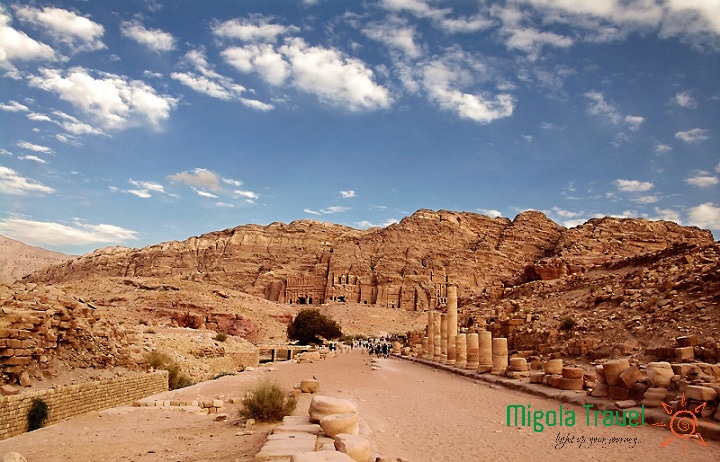
Petra became even more famous when several scenes from the movie "Indiana Jones and the last crusade" were filmed here. In the story of the film, Petra is located in the "crescent moon canyon" and is the land of the Holy Grail.
Before being conquered by the Romans in 106 AD, Petra was the capital of the Nabataeans, who were first known in 312 BC when they survived the conquest of Antigonus, a among the successors of Alexander the Great. During these years, the Nabataeans were thought to have lived a nomadic life and Petra was probably the site of tents and simple structures. The Nabataeans use the Aramaic script and direct trade groups to cross the region.
The change occurred when the demand for goods exchange between countries increased. Petra gradually became a trading center between Saudi Arabia, Mesopotamia, Egypt and the eastern Mediterranean. The prosperous period of the city took place about 2,000 years ago with residents expected to be 20,000 people, until the Romans annexed the land and won the right to rule the valuable trade route. The city was gradually ravaged by a series of earthquakes and eventually abandoned.
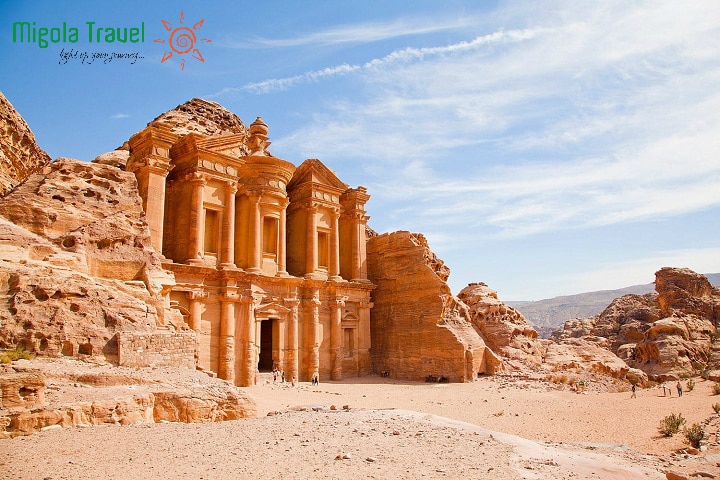
Houses and water
Based on the analysis of the houses left in Petra, we see the houses carved in stone about 2,100 years ago, when people left the tents to live in the houses carved in stone, began. urbanization period.
Petra's main street, known as a street with columns, was built in the south of the town of Wadi Musa. The walls associated with the quarries in Petra were built on the north and south sides of the town, making the city difficult to invade.
Petra also developed a sophisticated water pump system with canal systems, pipes and tanks that bring water back to the people. Evidence of this system was discovered by archaeologists during a physiological survey in the vicinity of Petra's main street.
Over time, however, the architecture of the city's tombs and temples has faded.
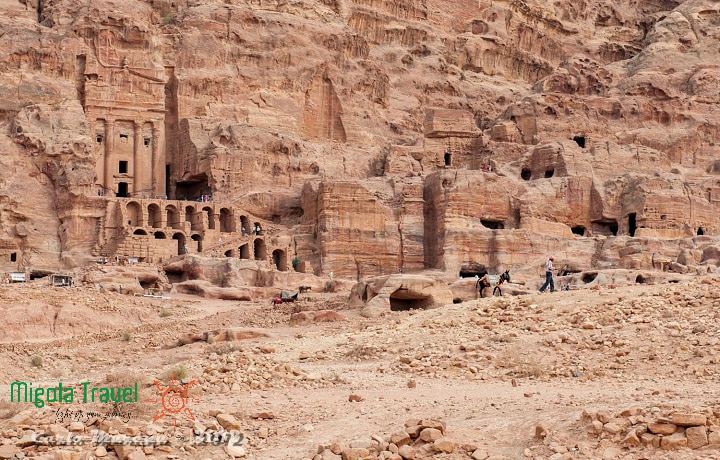
"Treasure"
Petra has many tombs, from simple designs, containing many holes buried in an unadorned stone tomb to sophisticated designs. Most of the tombs are built at the edge of the city, above the main street.
Khazneh is Petra's most famous mausoleum, Arabic for "treasure". The reason for such name because the locals once believed that the tomb contained secret treasures. Today, archaeologists call it a two-story high tomb.
The size of the money is measured with a height of 39 meters and a width of 25 meters with the main design of Greek structure, columns built in Corin style, vertical walkways with images depicting the twins Castor and Pollux legends. Above the center is an image of a woman that can be a simulation of Isis - an Egyptian god. Images of six legendary female warriors in the ancient world are also clearly shown.
The images illustrated also include the lion head bird and the eagle, the two winged animals considered the symbol of victory. Along with that are images of plants such as poppies, grapes and pomegranates. A rose, a royal emblem, was also found, proving that this was the tomb of a king.
Inside the tomb is quite simple design with a corridor leading to three rooms, the largest room in the center with a length of 12.5 meters, 11 meters wide and about 10 meters high. Three rooms show that previously there were three coffins placed. So far, no studies have determined who is buried in the tomb as well as the exact time of construction. Researcher Andrew Steward in the book "Discover Petra" said that it may be the tomb of King Aretas IV, died in 15 AD and had two wives.
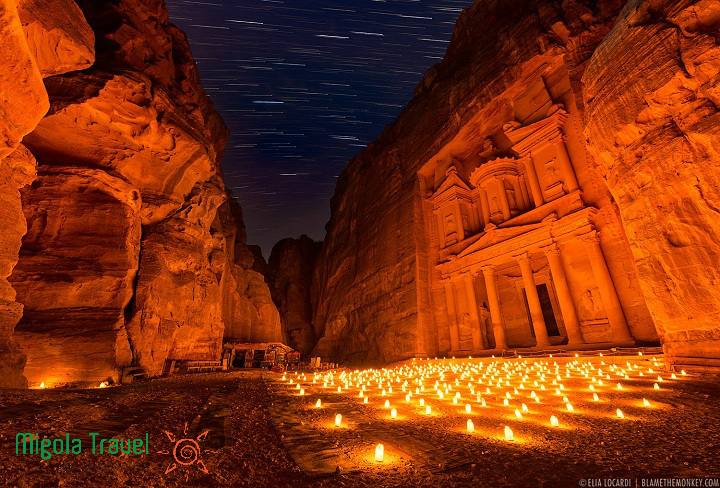
The ancient temple
The ancient inhabitants of Petra believed that the three temples located near the main road were built during the city's prosperity about 2000 years ago.
One of them is Oasr al-Bind. The temple conserve with the height of the wall is 23 meters. To reach the main hall, which is about 28 meters in size, each person will have to climb 19 steps up to the stop and then 8 steps through 4 pillars to reach the temple's corridor. At the end is the Holy Place. The image depicted in the temple shows that this structure could be built for the god Dushara.
Another structure called archaeologists called the "Big Temple" with a small hall designed to resemble an existing symphony hall, big enough to accommodate 600 people, this hall could be used for religious ceremony. Among the temple motifs is the image of elephant heads carved into limestone.
The third temple, partly placed on the hill, is the temple of winged lions. The reason why it is so called by the image of the animals with wings is found near the altar.
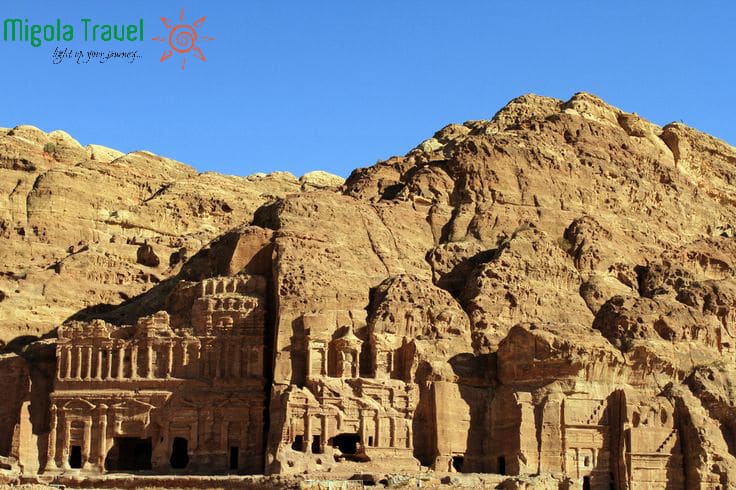
The temples, tombs and halls of Petra are scattered throughout the length of the rock
The temple itself is quite small in size. However, as researcher Phillip Hammond points out in his book "Discover Petra," the temple is full of supportive buildings, "a residence for temple workers, pilgrims waiting to enter the temple," metal and oil production areas, equipment for service and even the manufacture of antique antiques for tourists! ”.
Operate and exploit advertising by iCOMM Vietnam Media and Technology Joint Stock Company.
Adress: 99 Nguyen Tat Thanh, To 2, Khu 6, Thi tran Tan Phu, Tan Phu, Dong Nai.
Email: phuongtran2191@gmail.com | Tel: (+84) 984654960
Editor in chief: Tran Nha Phuong
Company: Lucie Guillot (Nha Phuong Tran)




